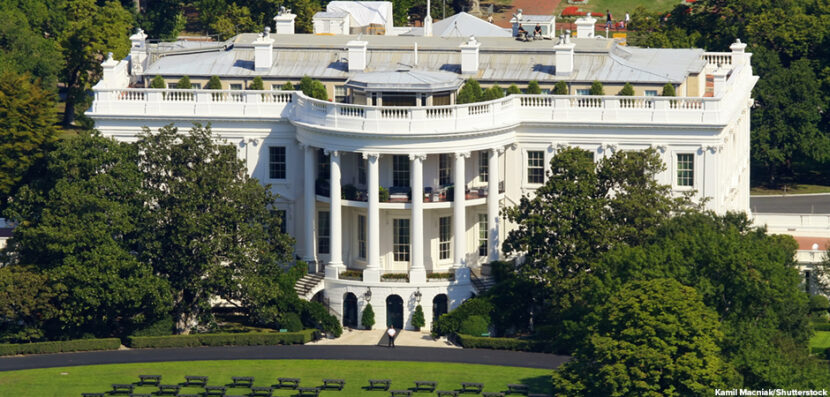
A History of White House Changes
As you may have seen in the news, President Trump is constructing a new ballroom in the White House. It involves significant changes to the structure of the building, including the partial demolition of the East Wing. This has sparked a great deal of controversy. But this is not the first time that the White House has undergone a major renovation. Here, Election Central takes a closer look at some of these changes over time.
Early Years
Construction on the White House began in 1792. Since then, it has served several functions. It is where the president and the presidential family live. It is the office where the president works. It is also a museum: over half a million tourists from around the world visit the White House every year. During that time, it has also undergone several changes and renovations to serve different presidents’ shifting political, practical, or personal needs. In fact, the “original” White House lasted only 14 years.
The first major renovation to the White House began with Thomas Jefferson, the third U.S. president. Jefferson added colonnades, or covered walkways, to connect the living quarters to the service buildings. The colonnades, which we view today as a signature part of the White House’s architecture, were heavily criticized at the time. The White House was originally intended to be simple, representing the democracy of the people. Federalists at the time believed that the colonnades were too expensive and made the White House look too much like a palace.
Another major change was made by Andrew Jackson, who added the North Portico (formal entryway) in 1829-1830. At the time, the nation was experiencing an economic downturn. But Jackson spent $24,729 (about $850,000 in today’s dollars) on the Portico. Today, however, it is one of the most iconic features of the White House.
Changes in the Twentieth Century
In 1902, Theodore Roosevelt faced significant controversy when he removed the Victorian-era conservatories (indoor greenhouses) and replaced them with what is today the West Wing. This new construction separates the area where the president lives from the area where the president works. The renovation cost $65,000 (roughly $2 million in today’s dollars) and was viewed by opponents as destroying the historical value of the White House.
The White House has undergone many renovations and redecorations in the twentieth century. A few examples: Tiffany glass installed by President Chester Arthur in the late 1800s (to the tune of $3.5 million in today’s dollars) was largely removed and stored away over time. In 1933, Franklin Roosevelt, a polio survivor, built an indoor pool for his physical therapy. In 1962, First Lady Jacqueline Kennedy built the iconic Rose Garden, replacing Ellen Wilson’s 1913 garden, which in turn had replaced Edith Roosevelt’s 1902 Colonial Garden. In 1970, Richard Nixon converted Roosevelt’s pool into a press briefing room (at a cost of over $4 million in today’s dollars). And in 1995, Bill Clinton’s decision to close the area of Pennsylvania Avenue in front of the White House to traffic due to security concerns sparked great controversy, both because of the economic impact, and because the people were now physically distanced from the “People’s House.”
Today’s Renovations
Currently, the Trump administration is the process of removing the East Wing of the White House to construct a new 90,000 square foot ballroom, or event space. The cost of the project is around $300 million. As with many of the White House changes in the past, there is public discussions about it. According to a recent poll from the Washington Post and ABC News, 56 percent of Americans oppose the project, and only 28 percent support it. The new ballroom will be able to hold events for up to 1,000 people.


